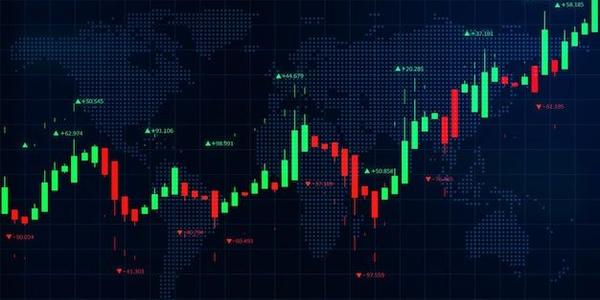A wave of optimism swept through Malaysia’s technology sector as markets welcomed news of a 90-day pause on reciprocal tariffs, fueling a sharp rebound in tech stocks and raising Malaysia’s potential profile in a shifting US–China trade landscape. The immediate response saw Inari Amertron Bhd surge to lead gains among technology names, while the broader Bursa Malaysia Technology Index posted a strong bounce after touching a multi-year low in the previous session. Traders and analysts framed the move as a potential signal that Malaysia could benefit from the evolving friction between the world’s two largest economies, with implications for foreign direct investment, supply-chain realignment, and capacity expansion in Malaysia’s technology ecosystem. The groundwork remains complex, however, as sector participants weigh tariff relief against ongoing structural shifts and the need to maintain competitiveness in an increasingly volatile trade environment.
Market rebound and the immediate stock response
The tech sector in Bursa Malaysia experienced a marked rebound in response to the temporary tariff relief, with a notable surge in shares across the sector. Inari Amertron Bhd emerged as the standout performer, closing 18.62% higher at RM1.72 per share, which translated into a market capitalization of roughly RM6.5 billion. This move underscored the market’s confidence in the stock’s fundamentals and its exposure to backend semiconductor activities that could benefit from a more favorable tariff climate and potential reshoring dynamics. Close on its heels was Frontken Corp Bhd, which advanced 18.52% to RM3.20 per share, yielding a market capitalization around RM5.1 billion. The strength among these two names highlighted investor appetite for firms with deep ties to semiconductor packaging, testing, and related services that are central to global electronics manufacturing ecosystems.
Meanwhile, the Bursa Malaysia Technology Index concluded the session up by 11.53%, after having touched an approximate five-year low of 39.12 points in the prior trading day. The broader sector saw a wide dispersion of movements, with 42 technology stocks registering gains and seven remaining unchanged as investors recalibrated expectations in light of tariff news and the evolving US–China trade standoff. Year-to-date performance for the index remained negative, reflecting ongoing market uncertainty and the sensitivity of tech equities to policy developments and global demand conditions. This rebound, while robust, did not erase the longer-term challenges or the volatility that has characterized the tech sector in recent quarters, but it did mark a key bullish turn in sentiment as investors reassessed risk and opportunity in Malaysia’s tech landscape.
The earnings and price action around these leaders highlighted several reinforcing themes for the market: first, that policy signals and tariff news can swiftly alter perception around the viability of regional supply chains; second, that specific companies with strong exposure to semiconductor packaging, testing, and related EMS (electronics manufacturing services) capabilities are particularly sensitive to shifts in tariff regimes and trade policy; and third, that sentiment can swing decisively when the market perceives an improved odds of resilience and demand for tech manufacturing within Malaysia’s borders. Taken together, the immediate response supported a thesis that, if tariff relief persists or expands, Malaysia’s technology counters could sustain a more durable upward trajectory, at least in the near term, even as global macro uncertainties persist. The sector’s performance also suggested that investors are pricing in a more favorable environment for diversification and regionalization of technology operations, a theme that has gained new nuance amid the US–China tensions.
Subsection: Operational drivers behind the stock moves
Analysts and investors cited several drivers behind the sharp moves in Inari Amertron and Frontken, pointing to the broader narrative of trade policy relief and the strategic value of Malaysia as a regional hub for electronics manufacturing. Inari Amertron’s leadership position in semiconductor assembly and test services makes it particularly sensitive to shifts in tariff policy that affect the cost structure and export viability of backend packages. The stock’s sizable rally reflected expectations that tariff concessions could ease cross-border logistics, reduce risk of tariff penalties on certain product streams, and bolster Malaysia’s attractiveness as a base for high-value manufacturing activities tied to American and other markets. Frontken, a provider of specialized surface-finishing, cleaning, and related services, benefited similarly from the sense that the reshoring of complex manufacturing processes could unlock higher utilization, longer-term contracts, and expanded capex in the sector.
At the same time, the market framed the broader rebound within the context of a transitional period for the technology ecosystem, where companies that rely on cross-border supply chains may gain from a temporary relief that lowers input costs, reduces the risk of punitive tariffs, and fosters stability in production planning. However, traders remained mindful that the tariff pause is inherently temporary and could be revised based on evolving negotiations and policy outcomes. The 90-day window creates a strategic horizon for management teams to advance capacity optimization, supplier diversification, and the potential relocation of certain activities in ways that could yield longer-term competitive advantages if conditions remain favorable. The market’s reaction also underscored that stock performance in this space remains highly contingent on policy signals, global demand trajectories, and the ability of Malaysian firms to navigate border rules-of-origin and non-tariff barriers that may be applied in future policy cycles.
Tariff dynamics and the broader trade context
The tariff developments that sparked the rebound reflect a complex overlay of unilateral policy moves, reciprocal measures, and negotiations between major trading blocs. The United States signaled a plan to raise tariffs on Chinese goods to as high as 125% after China had matched with an 85% tariff on US imports, a tit-for-tat escalation that intensified concerns about global trade frictions and the resilience of global supply chains. In parallel, authorities signaled a temporary easing of tariffs on selected countries, likely including Malaysia, with cap tariffs set at 10%—a substantial reduction from previously announced levels of 24%. This combination of measures—tariff hikes in one direction paired with temporary relief in another—created a nuanced backdrop for Southeast Asia’s tech manufacturing players and highlighted the risks and opportunities embedded in tariff policy decisions.
The 10% cap during the grace period is particularly consequential, because it tempers the punitive effect of tariffs on finished electronics and system-level products that would otherwise be exposed to higher duties. For semiconductors themselves, exemptions from tariffs have helped preserve critical export flows and maintain the momentum of activities that underpin global electronics supply chains. The contrast between raw semiconductor components, which may be shielded from tariffs, and finished electronic devices, which remain subject to duties, underscores a key governance challenge for EMS providers: the cost of input materials versus the final product’s tariff exposure. In the Malaysian context, this dynamic reinforces the importance of supply-chain resilience, supplier diversity, and the ability to optimize routing and product design to minimize tariff exposure while maintaining global competitiveness.
Analysts from Apex Securities highlighted that the latest tariff moves offer meaningful relief for Malaysia’s tech sector and could reinforce the country’s strategic position as an alternative destination for tech firms seeking to diversify operations away from high-risk regions. They emphasized that Malaysia could become more attractive to multinational companies pursuing dual-market strategies, particularly if US–China decoupling continues and bilateral trade talks between Malaysia and the United States reach tangible milestones. Yet Apex Securities also warned of potential short-term hurdles, including logistics complexity and the need to satisfy origin-of-assembly rules to avoid triggering US transshipment penalties. The note underscored a nuanced view: while relief can catalyze investment and relocations, it does not automatically translate into a wholesale shift of operations from China to Malaysia. Instead, a gradual reallocation—favoring lower-risk, high-value segments or specific stages of the manufacturing process—appears more plausible in the near term.
Subsection: Malaysia’s role in the global electronics supply chain
Malaysia’s current position in the global electronics ecosystem is anchored by its substantial backend semiconductor packaging and testing capacity. The country accounts for roughly 13% of this global capacity, illustrating its leverage in a critical stage of semiconductor manufacturing that is essential to the performance and reliability of modern devices. In 2024, Malaysia exported about RM73 billion worth of semiconductor products to the United States, a figure that represented roughly 12–13% of total electrical and electronic exports. The continued tariff exemptions for semiconductor products have been pivotal in maintaining this export trajectory, helping safeguard one of Malaysia’s most important industrial export streams. The tariff relief at the product level, specifically for semiconductors, reinforces Malaysia’s appeal as a stable, cost-competitive base for specialized manufacturing activities that feed into global consumer electronics, automotive electronics, and broader industrial applications.
Nevertheless, not all segments of Malaysia’s electronics output enjoy tariff relief equally. Finished electronics and system-level products remain subject to the 10% tariff, with the potential for higher duties once the grace period ends. This creates a bifurcated tariff landscape that EMS providers must navigate, balancing tariff exposure against production costs, logistics, and customer pricing expectations. The differential framework could exert pressure on margins for EMS operators, particularly those servicing higher value-add segments or customers seeking comprehensive end-to-end manufacturing solutions. The evolving tariff regime could also influence the pace and pattern of capital expenditure, as firms weigh the calculus of relocating or realigning certain operations to capitalize on tariff relief while preserving throughput and quality.
The macro implication for Malaysia is clear: tariff policy dynamics will continue to shape the incentives for capacity expansions, supply-chain diversification, and the geographic distribution of manufacturing activities. The balance between tariff relief and compliance requirements (such as rules of origin) will be a central determinant of how aggressively companies pursue realignment or expansion in Malaysia versus continuing to expand in other regional hubs or in China. The sector faces a delicate optimization problem—securing the benefits of tariff relief while ensuring that the operational and logistical costs associated with new locations do not erode the promised gains.
Sectoral impact on semiconductors, EMS, and finished electronics
The tariff environment interacts directly with Malaysia’s semiconductor sector and the broader EMS ecosystem, affecting margins, order flow, and strategic planning. Semiconductors themselves have benefited from tariff exemptions, contributing to a smoother export channel to major markets like the United States. In contrast, finished electronics and more complex system-level products continue to bear the burden of the 10% tariff during the grace period, with the potential for further tariff movement as policy decisions evolve. This creates a two-tier dynamic for EMS providers: those focused on backend packaging and testing may experience relatively more favorable conditions, while those specializing in finished devices or higher-value assemblies could face tighter margins if tariff exposure remains or increases.
For EMS players, the near-term implication is increased pressure on margins, particularly if customers seek to share costs or restructure supply chains to accommodate tariff exposures. This could accelerate emphasis on efficiency improvements, automation, and process optimization to preserve profitability in a more tariff-sensitive environment. It could also push firms to explore strategic collaborations, partnerships, and shared facilities to reduce logistics complexity and improve production scheduling. While a full-scale relocation of EMS operations to the United States is unlikely in the near term due to higher costs and capacity constraints, the sector could still experience meaningful order realignments, especially for lower-complexity consumer devices that are easier to re-shore or reallocate to alternative hubs with favorable tariff regimes.
Apex Securities highlighted that while the semiconductor segment remains relatively shielded from tariff penalties, the broader ecosystem may still face pressure from finished electronics and system-level products. The note suggested that a reallocation of orders—favoring higher-complexity components that benefit from Malaysia’s strong backend capabilities—could occur, albeit within a framework that preserves cost efficiency and competitive pricing. The potential for realignment is more likely to manifest in gradual shifts rather than abrupt, wholesale changes, as manufacturers seek to balance the cost advantages of regional production against the logistical realities of building new supply chains in a shorter time frame. The analysis implies that Malaysia could capture incremental foreign direct investment and capacity expansion over the next 12–24 months, particularly if the US–China decoupling trend persists and trade negotiations between Malaysia and the United States yield tangible outcomes.
Subsection: International trade flows and the risk-reward equation
From a trade perspective, Malaysia’s performance will be sensitive to the trajectory of tariff policy in major markets. The 90-day reprieve on reciprocal tariffs creates a window during which manufacturers can test and adapt to revised cost structures, potentially influencing the pace at which firms decide to expand or relocate certain activities. The outlook for 2025 and beyond hinges on several moving parts: the durability of tariff relief, any new rounds of tariff increases or reductions, shifts in global demand for consumer electronics and industrial electronics, and how rapidly supply chains can reconfigure to take advantage of favorable tariff regimes while maintaining reliability and quality standards.
In this environment, investors are closely watching indicators of policy stability, as well as the progression of Malaysia–US and Malaysia–China trade talks. The potential for Malaysia to become a preferred alternative for technology firms seeking to diversify operations is a central part of the narrative, supported by a combination of cost advantages, skilled labor force, and established capabilities in high-value electronics manufacturing. The risk-reward calculus remains nuanced: tariff relief can unlock investment, but persistent frictions or policy reversals could quickly erode the gains and prompt a re-evaluation of regional strategies. For now, the market is signaling cautious optimism that Malaysia can capitalize on the current environment to boost capacity, attract foreign direct investment, and strengthen its role within the global tech supply chain.
Company spotlight: Inari Amertron and Frontken in focus
Inari Amertron Bhd, as a leading sub-supplier in the electronics value chain, stands at the center of the market’s attention as tariff developments unfold. The stock’s impressive ascent, with nearly an 19% daily gain, reflects market expectations tied to Malaysia’s enhanced appeal as a manufacturing base for sensitive backend activities. Investors are likely pricing in improvements to the cost structure and a favorable policy framework that could support higher utilization of Malaysia’s semiconductor packaging and testing capacity, thereby sustaining revenues and potentially expanding profit margins in the near term. The company’s position within the broader supply chain makes it particularly responsive to the nuances of tariff policy, supply-chain diversification, and the pace at which regional manufacturing activities can scale up to meet global demand.
Frontken Corp Bhd is another beneficiary of the sector-wide rally, delivering a near double-digit percentage gain in the same session. The market’s reaction underscores the broader optimism that tariff relief and favorable policy signals can inject into the EMS space, especially for companies offering specialized services that underpin the manufacturing and maintenance of high-precision electronics and semiconductors. As the sector contemplates potential capacity expansions and capital investments spurred by improved economics and greater port of entry attractiveness, Frontken’s performance points to the market’s confidence in its ability to capitalize on these trends through service expansion, technology upgrades, and enhanced efficiency.
Apex Securities highlighted the nuanced reality behind the optimism, noting that while Malaysia’s technology sector stands to benefit from tariff relief, there remain structural considerations that could moderate the pace of positive impact. The firm emphasized that any sustained improvement in Malaysia’s tech sector will depend on factors such as ongoing improvements in logistics, the ability to meet rules-of-origin requirements, and the overall trajectory of US–China negotiations. The research note suggested that the 12–24 month horizon could see incremental foreign direct investment and capacity expansions, especially if the decoupling narrative continues to shape investment decisions. It also warned that a full-scale relocation of EMS operations to the US is unlikely in the near term due to higher costs and capacity constraints, with realignments likely to focus on lower-complexity consumer devices and selective segments of the value chain.
Sector outlook: investment, expansion, and risk management
Looking ahead, the tech sector’s trajectory will be influenced by how policy signals evolve, how supply chains adapt, and how market demand for electronics responds to global macro conditions. Malaysia’s role as a key node in the global electronics manufacturing ecosystem is reinforced by its share of backend packaging and testing capacity, but sustaining this position will require continued investment, talent development, and regulatory clarity. The tariff relief offered during the grace period provides a window for manufacturers to optimize their cost structures and plan longer-term investments in automation, facility upgrades, and workforce skills that can improve efficiency and resilience. In this context, companies may accelerate capex plans to capture productivity gains and to mitigate potential future tariff exposure on finished products.
From a strategic standpoint, Malaysia’s attractiveness hinges on a balanced approach to policy that preserves tariff relief while encouraging foreign investment and capacity expansions. The trade-off between cost advantages and compliance obligations—especially regarding rules of origin—will guide how quickly investors choose to migrate or expand certain activities. The broader market narrative also hinges on the durability of the US–China policy environment and how quickly other regions can offer comparable incentives for technology production. For Malaysian EMS providers and semiconductor players, the path forward will involve a combination of efficiency improvements, selective reconfiguration of supply chains, and careful negotiation of multi-market contracts to ensure competitiveness across the key export markets.
Analysts also point to the importance of maintaining robust export channels to the United States, given the scale of Malaysia’s semiconductor and electronics shipments there. The sustained growth of backend packaging capacity is a positive signal, but it will need to be matched by improvements in logistics, supply chain visibility, and quality assurance to sustain long-term demand. The potential for increased foreign direct investment is a meaningful upside scenario, particularly if tariff policy remains supportive and if bilateral negotiations with the United States yield concrete outcomes, such as incentives for technology transfer, workforce training, or co-investment in regional supply chains.
Policy implications and long-term considerations
In the longer run, the interaction between tariff policy and Malaysia’s technology sector will shape investment decisions, workforce development, and the geographic distribution of high-value manufacturing activities. The current tariff pause creates an opportunity for Malaysia to demonstrate its resilience and adaptability as a regional hub for sophisticated electronics manufacturing, but it also places emphasis on policymakers to maintain policy stability and provide a predictable environment for investors. The sustainability of tariff relief will be a key determinant of whether Malaysia can sustain and deepen its role in the global supply chain, attract new investments, and expand capacity in lines that support high-value electronics production.
There is also a broader geopolitical layer to consider. As the United States and China recalibrate their competition and cooperation dynamics, regional players like Malaysia could gain bargaining leverage if they can offer reliable, low-risk manufacturing platforms that meet international standards. This could incentivize bilateral engagements with the United States and other major markets, fostering a more integrated regional ecosystem designed to withstand tariff shocks and supply-chain disruptions. However, the same tensions also pose downside risks, including the possibility of policy reversals, new tariffs, or stricter rules that could complicate operations and pricing for Malaysian manufacturers.
The sector’s success will likely depend on several levers: continued tariff clarity and predictability, the speed and quality of port and customs reforms to reduce logistics frictions, and targeted incentives that promote R&D, innovation, and high-value manufacturing. Stakeholders must also monitor the evolution of rules of origin, which determine eligibility for tariff relief and can significantly affect supply-chain configuration and cost structures. As the market absorbs these shifts, investors and corporate management teams will weigh not only the immediate financial impact of tariff changes but also the strategic implications for long-term positioning in a region that remains central to global electronics manufacturing.
Conclusion
The immediate market response to the tariff pause has been a decisive rally in Malaysia’s technology shares, led by Inari Amertron and Frontken, as investors priced in the potential upside from a more favorable tariff regime and the prospect of greater investment activity in Malaysia’s tech sector. The Bursa Malaysia Technology Index’s sharp rebound followed a period of weakness, reflecting renewed optimism about Malaysia’s role as a resilient and strategically important hub for semiconductor packaging, testing, and broader electronics manufacturing in a world navigating US–China tensions. While the tariff relief offers real opportunities for capacity expansion, investment, and supply-chain diversification, the landscape remains complex and dynamic, with risks tied to policy trajectory, logistics feasibility, rules of origin, and ongoing global demand conditions. Malaysia’s ongoing appeal will depend on its ability to translate tariff relief into sustained capital expenditure, improved competitiveness, and a stable, transparent policy environment that encourages both local growth and foreign participation in the technology economy.



